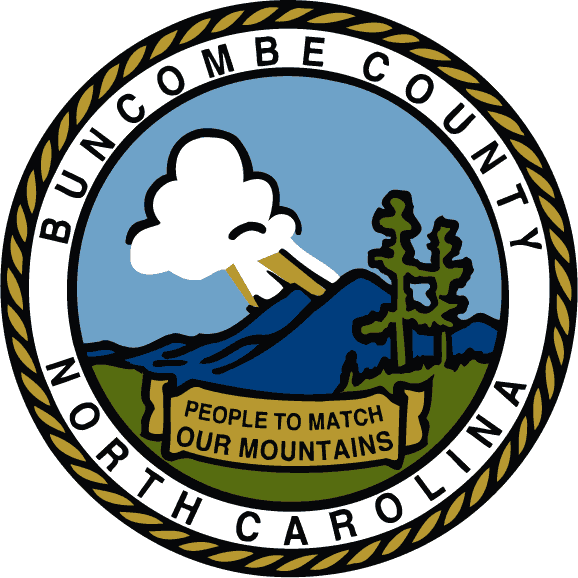Increasing Buncombe County’s supply of affordable housing topped the list of priorities established last year by the county Board of Commissioners. At the board’s meeting of Tuesday, March 15, members may finalize some numbers to go with that general goal.
The new business section of the meeting’s agenda, which usually contains matters to be voted on by the board, lists “Affordable Housing Subcommittee Goals” as an item. While no further documents were linked to the agenda as of press time, a March 1 presentation to that subcommittee provides more details.
According to the presentation, the county hopes to “impact 2,800-3,150 affordable housing units by 2030,” including 1,500-1,850 new rental units affordable for households making 80% or less of the area median income ($42,100 for an individual or $60,100 for a family of four). An additional 400 units would be made available for ownership to people in the same income bracket.
Another 500 units affordable at 80% AMI would be supported through repair programs, while 400 units would be made available for either ownership or rent to residents making between 80% and 120% AMI.
Those numbers are unchanged from earlier presentations on housing goals, including one delivered by board Chair Brownie Newman Feb. 1. But the March 1 presentation adds for the first time that the county will set goals for homeless shelter beds and units affordable to those making up to 30% AMI ($15,800 for an individual or $26,500 for a family of four). No numbers have yet been set for those housing categories.
Newman estimated that Buncombe would need to invest about $62 million through the end of the decade to meet these goals, to be provided by a combination of general fund spending, federal American Rescue Plan Act dollars and donations of county-owned land. He suggested that the county could hold a referendum on a bond issue to cover some of the cost; however, he emphasized that he would pursue affordable housing investments even without bond funding.
In other news
Commissioners will vote on sending the U.S. Forest Service a letter formally objecting to proposed plans for the Nantahala and Pisgah national forests. Advocates for protecting Big Ivy, a forested part of Buncombe’s northeast, had come out in force to ask for that action during a March 1 board meeting.
The letter criticizes the USFS for not designating roughly 4,000 acres of Big Ivy as “forest scenic area,” a status that would prioritize conservation and recreation. It also claims that federal officials didn’t study a proposed Craggy National Scenic Area, as recommended by the Board of Commissioners in a 2020 resolution.
The board is also scheduled to appoint five members to the Community Reparations Commission, a body tasked with establishing short-, medium- and long-term recommendations to address disparities within Asheville’s Black community. Asheville City Council made its five picks March 8; an additional 15 members have been appointed by historically Black neighborhoods through an independent process.
Consent agenda and public comment
The board’s consent agenda for the meeting contains six items, which will be approved as a package unless singled out for separate discussion. In addition to the routine approval of previous meeting minutes, the agenda includes approval of two budget amendments. One would accept nearly $54,000 in federal funds to provide social services for aging adults; the other would cover about $161,000 in expenses for the county’s tax reappraisal program from a fund reserved for that purpose.
The commissioners will also hold a special meeting at noon to conduct interviews for the Community Reparations Commission, as well as a 3 p.m. briefing to discuss Buncombe’s COVID-19 response, strategic plan progress and code enforcement process. The full agenda and supporting documents for the regular meeting can be found at this link.
In-person public comment will be taken at the start of the regular meeting, which begins at 5 p.m. in Room 326 at 200 College St. in Asheville; no voicemail or email comments will be permitted. Both the briefing and regular meeting will be livestreamed on the county’s Facebook page and will subsequently be available via YouTube.




It would be great to frame these numbers to give them context. The population of the city is now roughly 100k and growing 20% a year. If that growth rate holds, the city’s population will be ~350k in 2030. A 10% growth rate for that time would still mean more than 200k residents. (This is quick math.) So the good folks on the City Council have invested and are investing all of this time and effort for…3,150 units? If four people are in each unit (which is too high an assumption), this will result in housing for ~12,600 of those new people during that time, not even counting needs of current residents. This is not the answer folks!!! Shame on any journalist or politician who doesn’t take the time to explain this – or who is unable to.
Thanks much for the feedback, fortevultu. I’ve provided additional context on local affordable housing needs and growth rates in my coverage of the March 15 Board of Commissioners meeting, available here: https://mountainx.com/news/county-sets-affordable-housing-targets-for-2030/